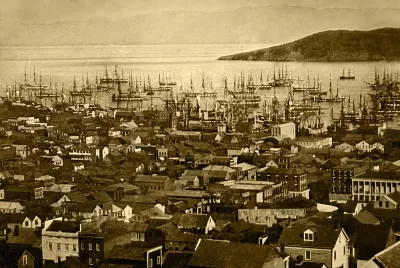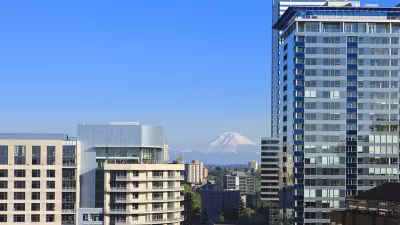The latest Upshot by Emily Badger looks at why American cities with the greatest economic opportunity no longer attract the population increases of yore

North Dakota was the exception. Riding an oil boom earlier this decade, some counties in North Dakota correspondingly had significant population and household growth. Otherwise, since 2000, metro areas in the United States with the most prosperity don't have the most growth.
In the latest Upshot in the New York Times, Emily Badger reports that, historically, boomtowns had correspondingly high growth rates. Chicago in the late 1800s, Detroit between 1910 and 1930, Los Angeles in the 1920s, and Houston after 1950 all experienced a swelling population as economic development took off.
Why is this? Many coastal cities, for example, have land use restrictions and actual land shortages that inhibit growth. One solution is to reduce the barriers to the creation of more housing in the most prosperous and expensive cities, which is both a political and economic challenge. Badger concludes that the federal government does not have the power to do this, but local cities and suburbs do.
FULL STORY: What Happened to the American Boomtown?

Maui's Vacation Rental Debate Turns Ugly
Verbal attacks, misinformation campaigns and fistfights plague a high-stakes debate to convert thousands of vacation rentals into long-term housing.

Planetizen Federal Action Tracker
A weekly monitor of how Trump’s orders and actions are impacting planners and planning in America.

In Urban Planning, AI Prompting Could be the New Design Thinking
Creativity has long been key to great urban design. What if we see AI as our new creative partner?

King County Supportive Housing Program Offers Hope for Unhoused Residents
The county is taking a ‘Housing First’ approach that prioritizes getting people into housing, then offering wraparound supportive services.

Researchers Use AI to Get Clearer Picture of US Housing
Analysts are using artificial intelligence to supercharge their research by allowing them to comb through data faster. Though these AI tools can be error prone, they save time and housing researchers are optimistic about the future.

Making Shared Micromobility More Inclusive
Cities and shared mobility system operators can do more to include people with disabilities in planning and operations, per a new report.
Urban Design for Planners 1: Software Tools
This six-course series explores essential urban design concepts using open source software and equips planners with the tools they need to participate fully in the urban design process.
Planning for Universal Design
Learn the tools for implementing Universal Design in planning regulations.
planning NEXT
Appalachian Highlands Housing Partners
Mpact (founded as Rail~Volution)
City of Camden Redevelopment Agency
City of Astoria
City of Portland
City of Laramie




























